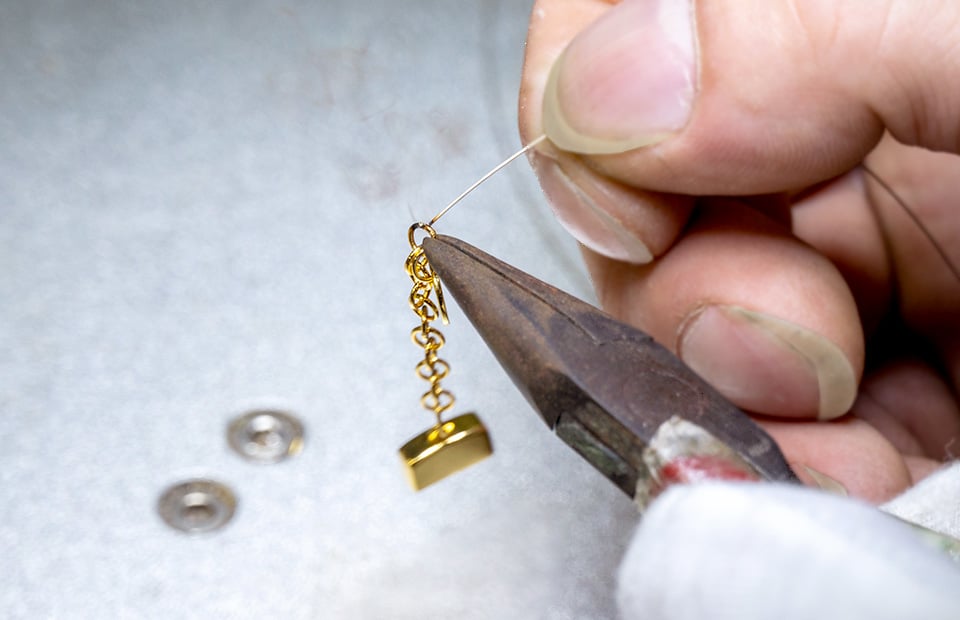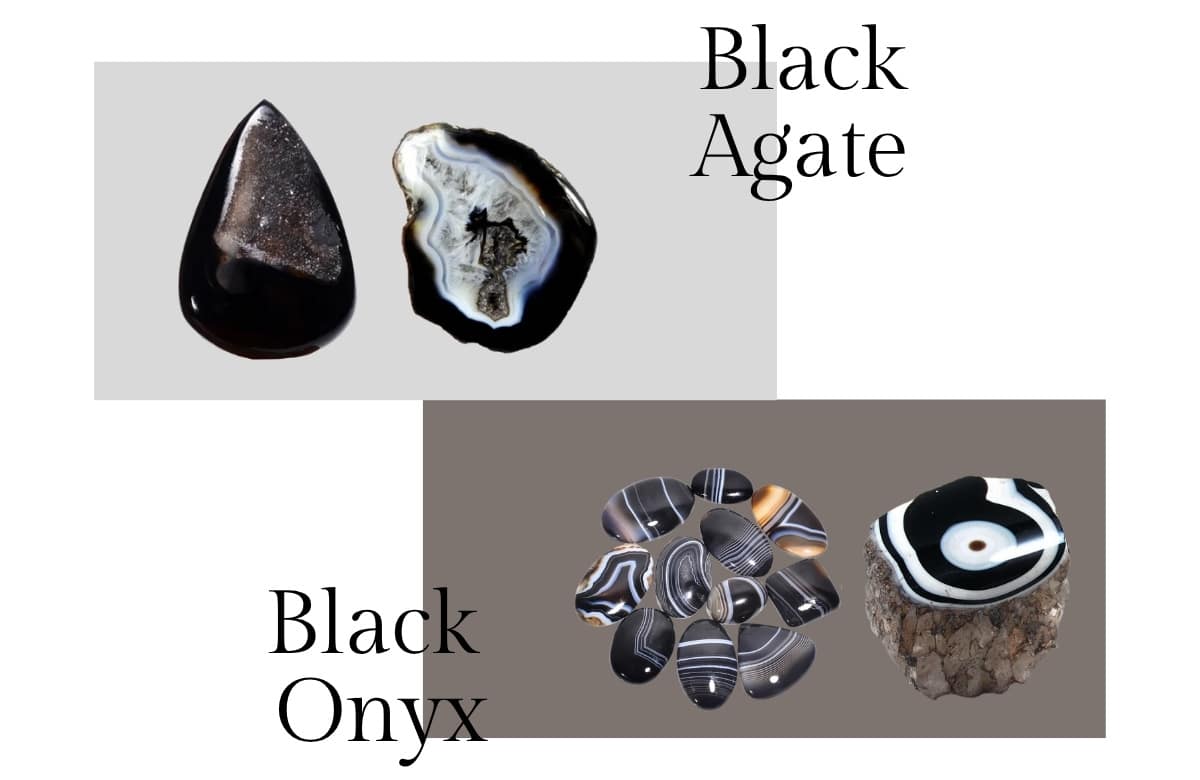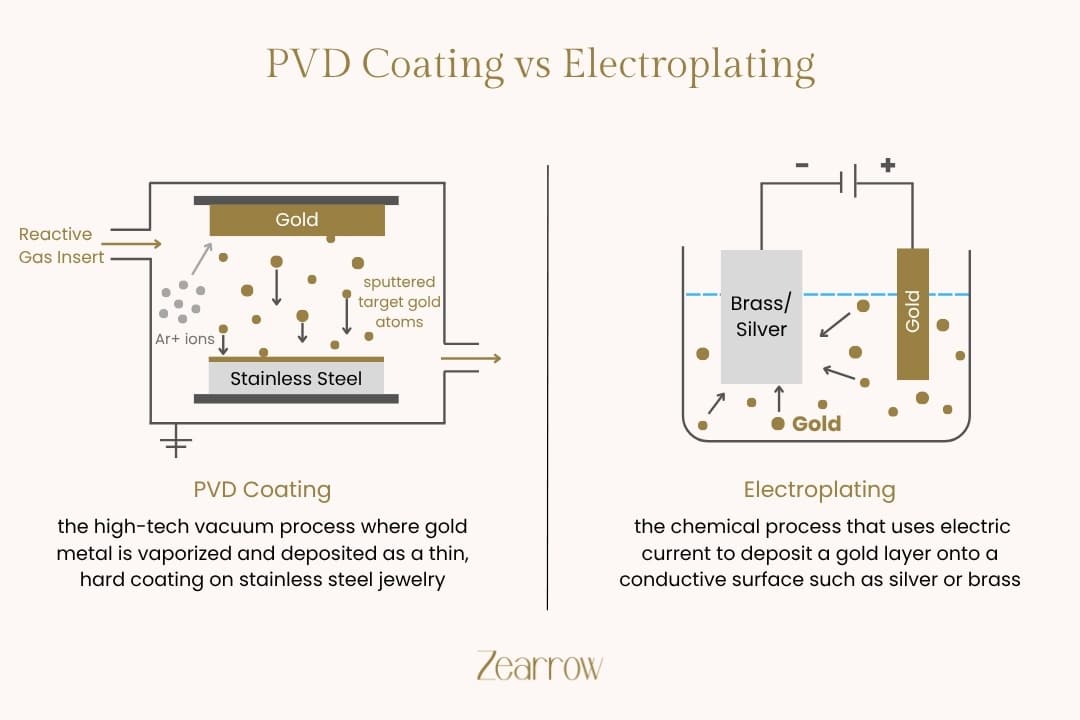Achieving a sturdy structure is very important in the jewelry design industry. A piece of jewelry should not only be beautiful, but also timeless without losing its original aesthetic allure.
Whether you are a beginner seeking to understand the fundamentals of how to ensure jewelry structural strength, or a seasoned jeweler seeking to improve your skills, this blog post will serve as a compass to direct you on the right part.
Starting from Quality Materials
The first factor brought into concern is the type of material used. Hence, the first step is to source for quality materials that have great strength. Using these types of materials will help in crafting a cherished adornment for years to come.
What Makes Good Jewelry Materials
When seeking for good jewelry materials, what are the things you should look out for?
- Density: Basically, density refers to the mass of a material per unit volume. This is a very essential factor as it contributes to the weight and feel of the jewelry. The weight of the jewelry influences how it is perceived. Higher-density materials like platinum and gold often exude a sense of luxury and strength.
- Purity: Refers to the absence of impurities or additional metals in the material composition. This is more evident in 24-karat gold, which is considered 100% pure gold. Materials with higher purity don’t only contribute to the jewelry color, but also boost its hypoallergenic abilities. Pieces made with pure metals are less likely to cause skin irritation or allergy.
- Hardness: Good materials are tough and capable of resisting scratches. This allows jewelries to maintain their original form and aesthetics, regardless of frequent contact with hard surfaces. Also, material hardness is important in protecting gemstones and preventing wear in daily use.
- Corrosion Resistance: Materials that are capable of resisting corrosion can prevent tarnishing and discoloration, which helps to preserve the jewelry’s beauty and reduce the need for frequent maintenance. This is also why gold vermeil and gold filled jewelry are highly recommended as waterproof and anti-tarnish.
- Malleability: This refers to the ability of a material to withstand deformation when put under pressure. Malleable materials are easier to work with when constructing a jewelry design, as they allow for intricate and delicate patterns without compromising structural integrity.
Common Jewelry Metals and Their Strength
1. Sterling Silver
Silver is a precious metal, but considered to be too soft for jewelry making. Hence, it is mixed with copper to make it hard and durable. This results in the term “sterling silver.” It comprises 92.5% silver and 7.5% copper.
Strengths
- It is soft, malleable, ductile, and easy to form to any shape
- Very reflective
- Sterling silver jewelry can be polished to a luminous sheen
- Cheaper when compared to gold or platinum
- Has excellent antibacterial properties
- Durable with a longer lifespan than some other metals
2. Gold
Pure gold is not suitable for making jewelry because it can’t be fabricated easily to desired shape, hence it is alloyed with silver, copper, zinc, nickel, or palladium. It is one of the Metals of Antiquity i.e., metals used by humans in historical times. Gold is measured in Karats (k). Pure gold is 24k, while other variants include 21k, 18k, 16k, and 14k (depending on the amount of pure gold in the alloy).
Strengths
- It’s a popular choice for special occasions, such as wedding rings, bands, earrings, necklaces, and bracelets
- Capable of resisting most acids
- Can be very hypoallergenic when plated
3. Platinum
Platinum is one of the rarest materials in the world. It is very hard, making it difficult to configure into jewelry pieces. Therefore, it is alloyed with softer metals like copper, palladium, titanium, and rhodium.
Strengths
- It is super durable and doesn’t tarnish
- Extremely resistant to corrosion and heat
- Naturally white and will not fade or yellow despite exposure to harsh elements
- Excellent hypoallergenic properties
4. Stainless Steel
This is a durable, rust-resistant, and non-corrosive metal that comprises an iron alloy. Stainless steel jewelry include necklaces, pendants, earrings, bracelets, and rings. No matter the pressure they are put under, they do not experience discoloration or oxidation.
Strengths
- It is renowned for its exceptional durability
- Very malleable, making it suitable for a wide array of intricate and detailed designs
- Excellent choice for people with sensitive skin
- Serves as an affordable alternative to precious metals
- Requires low maintenance and upkeep
5. Titanium
Titanium is a lustrous, lightweight metal with a silver color. It is widely known for its outstanding strength-weight ratio, which is the reason why it is often paired with soft metals like gold and silver to produce a harder material.
Strengths
- It is completely hypoallergenic
- Lightweight, scratch-resistant, and easy to polish into various color
- Highly resistant to chemicals and easy to recycle
- Corrosion-resistant
A Balanced Jewelry Design
Everything about the design of a balanced jewelry boils down to SUPPORT and STRUCTURE.
- Support is everything about the materials, principles, and techniques used, which allows the jewelry to move, drape, and flow freely when it’s worn.
- Structure is everything about the materials, principles, and techniques used, which allows the jewelry to maintain its shape and integrity when it is worn.
It is really not much different from engineering and constructing a bridge. Plans must be made on how the jewelry will maintain its shape and not fall apart. Every jewelry design must go through strict evaluation on function & structure, and the tiniest elements like prong length shall be taken into consideration.
Support Systsems
These are components or techniques built into jewelry pieces for smooth movement, flow, and drape. Sufficient support system helps absorb stress from negative impacts, thereby minimizing the effect. Some of them are:
- Rings
- Loops
- Links
- Hinges
- Rivets
- Knots
Without these support systems, pieces of jewelry get stiff and when they get stiff, further movement will force them to chip, break, or crack.
Structural Systems
These are parts and techniques integrated into pieces of jewelry to manage what might happen when they are pulled, bear weight, or twisted. This simply refers to the mechanisms put in place to withstand exposure to external factors.
Structural systems can be splitted into 3 categories, namely:
- Horizontal Structures: Assists in regulating the effects of horizontal movements like pulling, tugging, or stretching. Well-designed horizontal structures distribute the weight and stresses placed on the jewelry equitably. This allows for more dimensionality and longevity of the piece.
- Vertical Structures: Assists in controlling the effects of vertical movements like bearing weight or resisting bending. Well-designed vertical structures allow pieces of jewelry to find a balanced point between the effects of gravity and their own weight.
- Rotational Structures: Assists in regulating the effects of rotational movements like twisting, curling, or turning. Well-designed rotational structures allow the point of connection to rotate in response to external forces, but then rotates back in place.
The 4S of Jewelry Making
As mentioned earlier, jewelry making can be viewed from an architectural standpoint. This involves finding a point of equilibrium where aesthetics and functionality are balanced. The equilibrium point is a spot among the 4S of jewelry making – Strength, Suppleness, Stability, and Synergy.
- Strength: Refers to jewelry design choices about materials and techniques that help prevent breaking. For instance, choosing a thicker cord over a thinner cord to secure a clasp.
- Suppleness: Refers to jewelry design choices about materials and techniques that help maximize elasticity and flexibility. For instance, the inclusion of intervening rings to several jewelry findings increase suppleness.
- Stability: Refers to jewelry design choices about materials and techniques that help prevent deterioration, collapse, or deformation. For instance, adding extra reinforcement to the ends and corners of jewelry pieces.
- Synergy: Refers to choices about materials and techniques that help improve the jewelry design appeal and functionality. For instance, inserting tight clustered beads into a pendant drop will be many times stronger, more supple, more stable, and more appealing than inserting only one bead.
Strong Link Chains for Necklaces, Bracelets, and Anklets
Chain is a crucial part in jewelry structure.
Below, we will explore the 4 strongest chains, stating their strengths and peculiarity. But before that, let’s examine the factors that influence the strength of a chain.
Factors that Influence Chain Strength
- Link Type: The strongest chains are made up of interlocking links. They don’t have bending points, so that they won’t fold or twist, as this could damage the links.
- Thickness: Chains with thicker links are stronger and more durable. Only strong chains can be used for pendants because of their weight, hence they must be thick and have inert strength.
- Type of Metal: The strongest metals for chains are precious metals, such as gold and platinum. Sterling silver is also a reliable option, but it requires frequent maintenance to avoid tarnishing.
- Density of the Metal: Solid gold links have higher amounts of gold, which makes them more heavyweight and stronger than other chain links that are made from non-precious metals.
- Type of Link Soldering: Chains with independently soldered links have higher strength to withstand pulls or tugs since the links don’t have gaps. Also, chains that have gaps break easily if an individual chain link bends or detaches from the rest.
- Welding: Careful welding for each component and loop is fundamental for link chains. Craftsmen that use better welding technology tend to create stronger chains.
Strongest Chain
Here are the top 4 strongest chains you can trust, even with heavyweight pendants:
1. Cuban Chain
It’s a type of Curb Link Chain, sometimes called Miami Cuban Link. All curb link chains are strong, but the Cuban chain stands out as the strongest because of its thickness. It is easily characterized by its flat, interlocking, twisted oval links.
Cuban chains can stand alone with or without a pendant. You can rely on its strength and durability to carry the weight of your pendant.
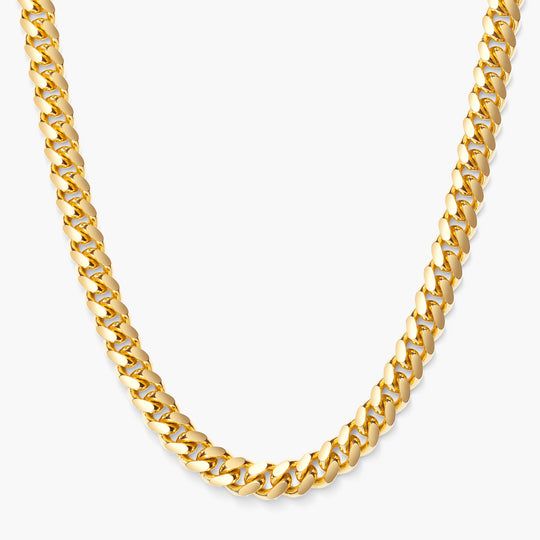
Strengths
- Has individually soldered links
- Very thick links
- Interlocked links without bending points
- Excellent for pendants
2. Wheat Chain
Also called the Spiga Chain or Espiga Chain, it features figure-eight-shaped-links that face the same direction, resulting in a braided form with squared edges. This chain is lightweight and resistant to kinks.
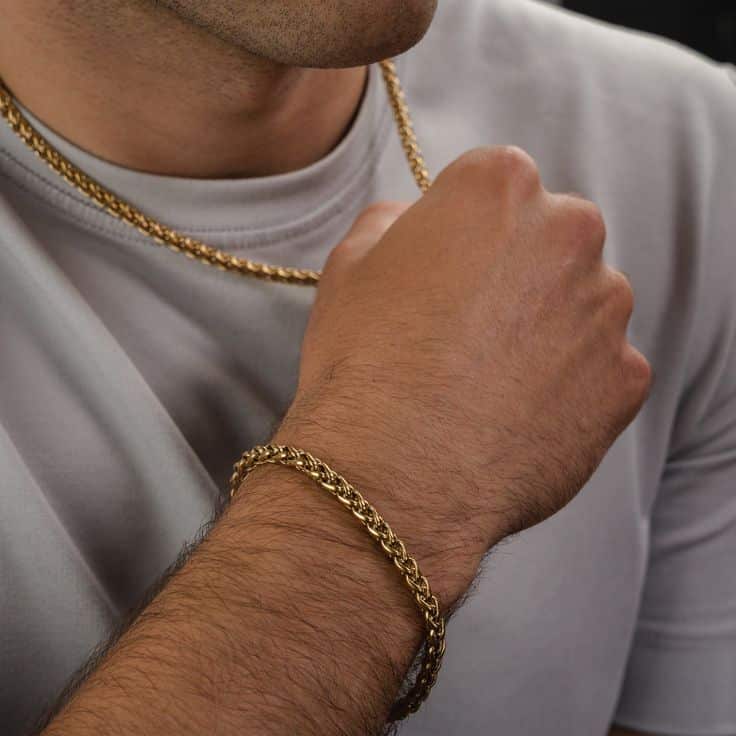
Strengths
- Resistant to kinks, thereby reducing the risk of breaking
- Strong, intricate, and symmetrical design
- Does not require much width or thickness
- Low risk of breakage from pulls or tugs
3. Cable Chain
Cable chain has one of the most basic designs. The link structure is similar to the types of chains used for industrial applications, hence why it’s reliably strong and durable. It is the smaller version of a standard iron chain.
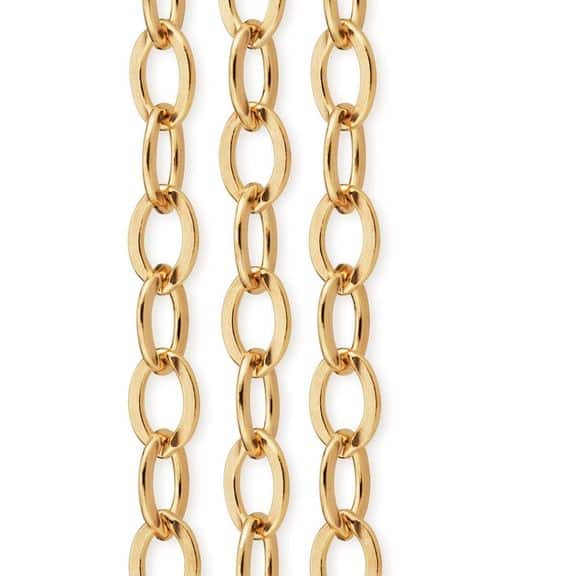
Strengths
- Uniformly interlocked oval links
- Individually soldered links
- Easy to repair
- Great for pendants
4. Rope Chain
Rope chain was the first hip hop chain that became widely known, thanks to rappers of the time, such as LL Cool J, Slick Rick, and Run-DMC. The chain is made mimicking strong ropes, which is why it’s one of the reliable chain types for pendants.
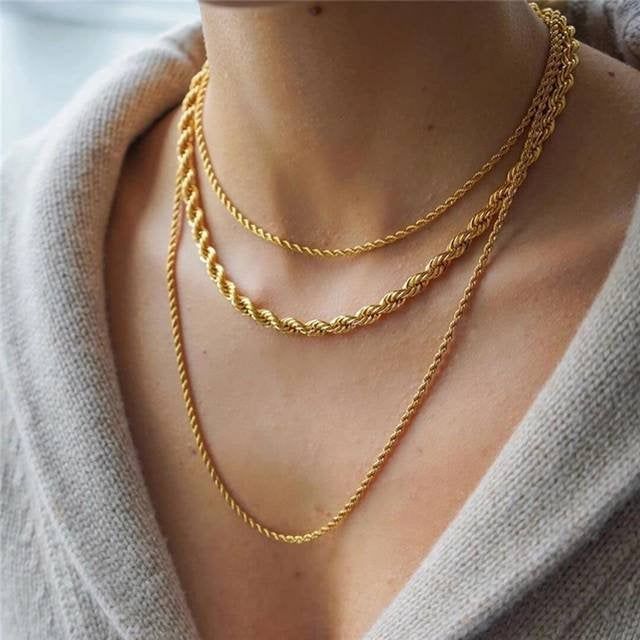
Strengths
- Extremely durable
- Heavyweight with a lustrous appearance
- Interwoven links contribute to the strength
Chain Pull Test
The Pull Test is a quality assurance measure used to assess the structural integrity and strength of chain links. This test ensures that the chain possesses the necessary strength to withstand typical stresses it may face when worn.
These are the processes involved:
1. Setup
- One end of the chain is attached to a fixed component or fixture.
- The other end is secured to a five-pound weight, ensuring a uniform application of force on the chain.
2. Force Application
- Gently apply tension to the chain, allowing the weight to hang freely.
- Maintain the five-pound load on the chain for 5 seconds.
3. Observation
- Closely look at the chain links for any signs of deformation, breakage, or stretching.
- Chains that withstand the applied force without exhibiting damage are considered to have passed the test.
Firm & Solid Clasps
Firm and solid clasps play a crucial role in ensuring both the functionality and durability of a jewelry piece. Serving as the connection point, clasps secure the jewelry around the wearer, ensuring a fastened fit and preventing accidental loss.
Below, we will explore the 4 strongest clasps commonly used in jewelry.
Strongest Clasps
- Lobster Clasp
This is one of the strongest and arguably the most common clasps you will see on every jewelry. The name is derived from its shape, as the clasp displays the illusion of a lobster claw with the pinching style of the hook. Compared to other types of clasps, this style guarantees more security and is very easy to open and close.
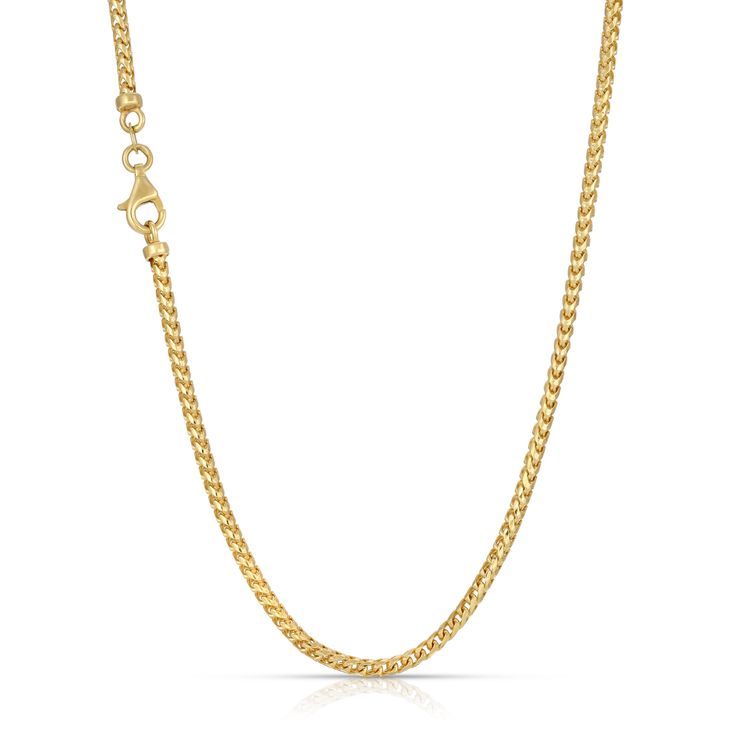
- Fish Hook Clasp
This clasp looks like a fish hook. It’s a delicate fastener that comes with a long hook. Fish Hook clasps are popularly used on pearl jewelry, although they are becoming more common on other jewelry types. These clasps are known for undoubted security and because of their appearance, they are often used on expensive jewelry.
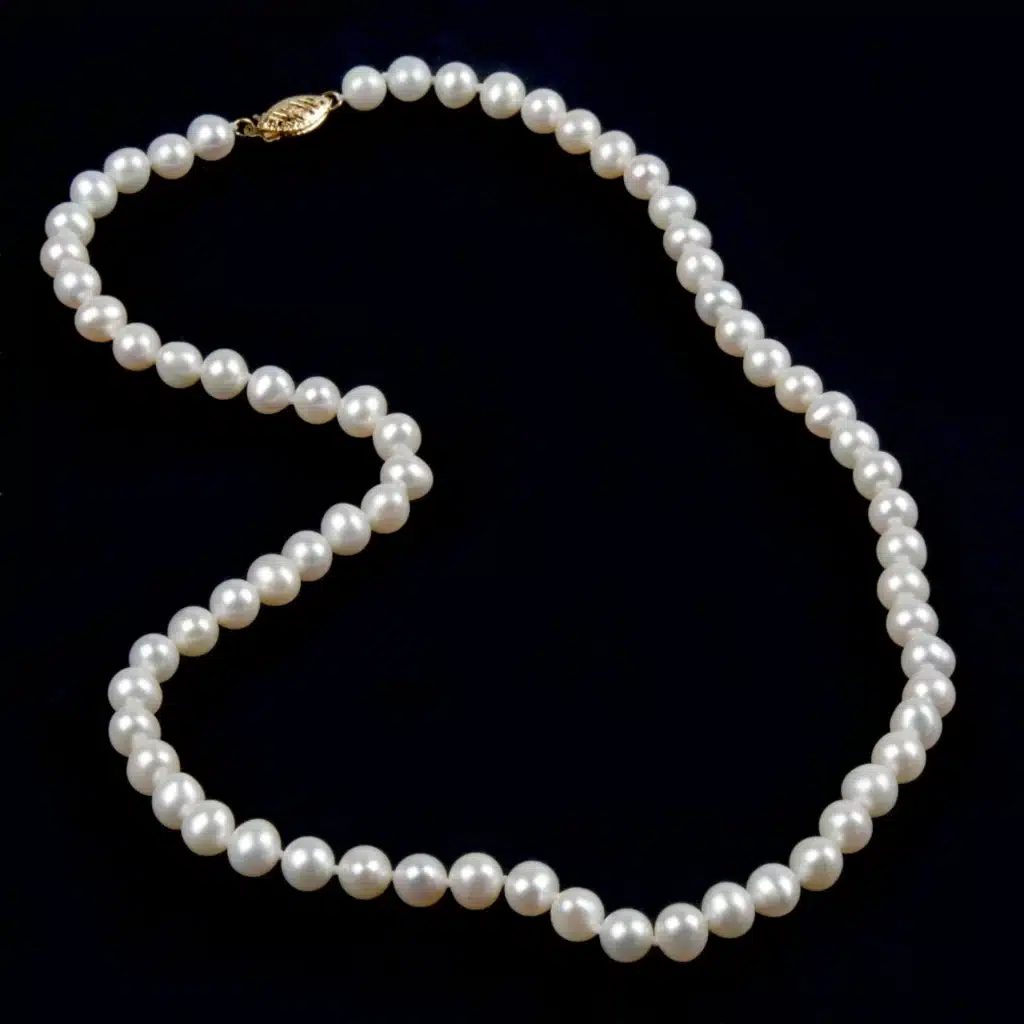
To close the clasp, the hook is put into a decorative, oval encasing and hooked around a stopper bar on the inside. Then, the hook slides and clicks into place within the encasing. The hook can’t be seen, making the jewelry appear more beautiful and decorative.
- Barrel Clasp
Also referred to as the Torpedo Clasp, it involves a small barrel-shaped closure that is used to tighten two ends of a chain together. Its working system is similar to a threading mechanism through a hook or screw. It simply opens and closes when it is twisted.
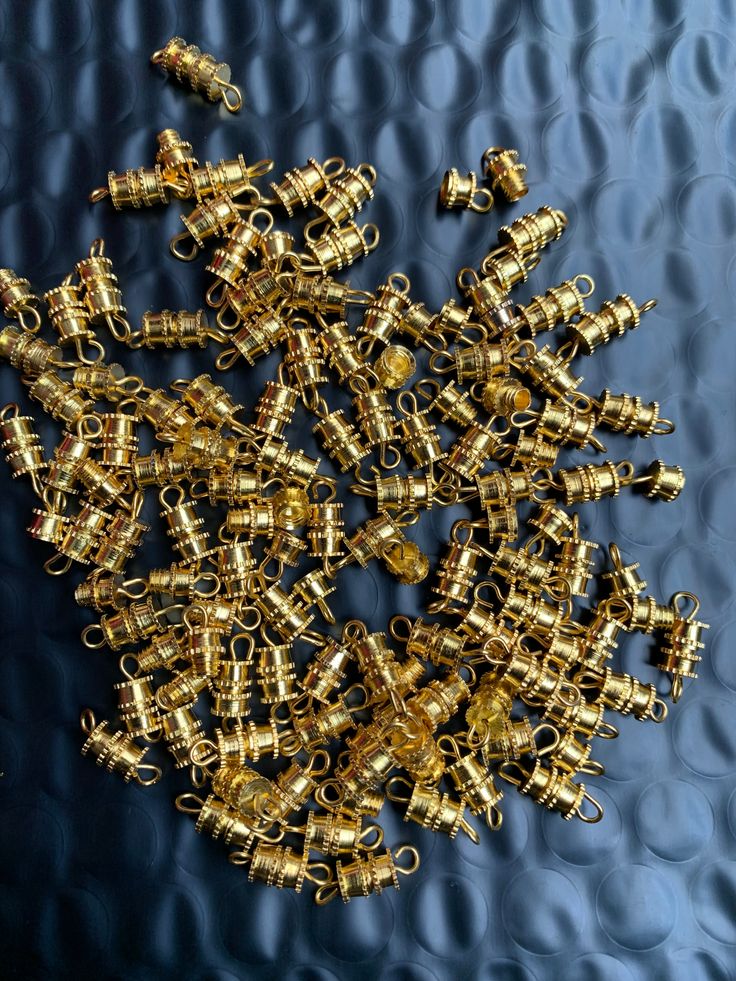
Barrel clasp is a safe option, as it is known to be sturdy and available in different sizes to fit various types of jewelry. However, this type of clasp is not suitable for bracelets because it can be difficult to open or close with one hand.
- Box Clasp
This clasp type involves inserting a tab into a tiny box that contains a safety mechanism that will keep the chain fastened securely. When you close a box clasp, you will hear it click, meaning it is tightly secured.
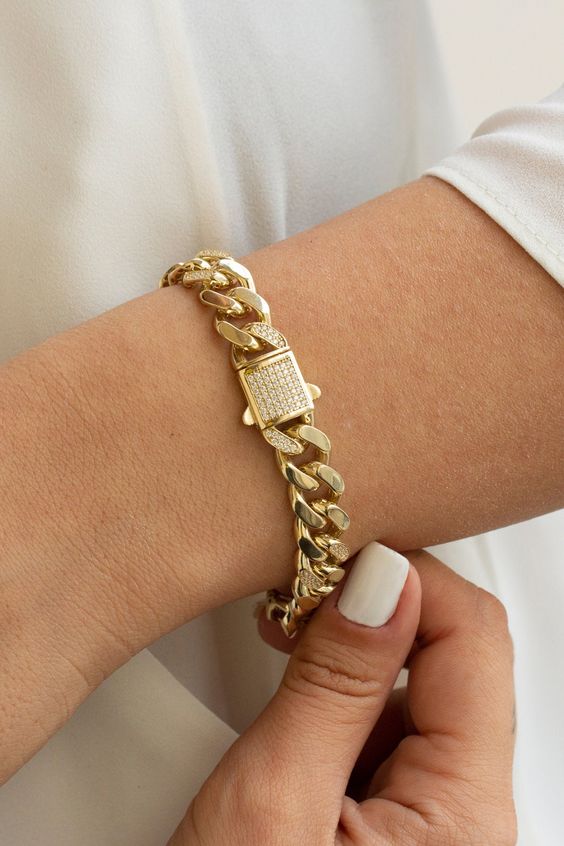
Some box clasps are built with a chain design that encloses the box itself, making a necklace or bracelet look endless. Sadly, this clasp type is heavy, so it’s better used for bigger chains.
Clasp Testing(Items with Open/Close Function)
The Clasp Testing involves manually opening and closing the clasp 200 times to confirm the durability and reliability of the fastening mechanisms. The essence of the test is to simulate real-world wear and tear.
These are the processes involved:
- Setup
- Ensure that the clasp is tightly installed to the chain.
- Manual Operation
- Manually open and close the clasp 200 times.
- Mimic the movements a wearer would typically perform during daily use.
- Observation
- Closely inspect the clasp after the 200 cycles for any sign of damage, wear, or malfunction.
- If it has any deformity, loss of tension, or is unable to securely fasten, it means the clasp is not good enough.
Infallible Gemstones
Gemstones elevate jewelries’ value, making each piece a narrative of beauty and profound significance. As the centered piece on jewelry, falling gemstone is unacceptable.
Stone Placement
Achieving infallible stone with precise craftsmanship. In our workshop we make sure all stones are set flush and straight in setting. They should be pushed all the way to the back of the setting seat.
Jewelry Stone Setting
Stone setting is one of the essential stages of jewelry design, in which gemstones are attached to the jewelry through metal casting or prongs. The major aim of stone setting is to keep the gemstone secure, as well as boost the gemstone’s brilliance by showing its cut, clarity, and color.
There are several jewelry stone setting methods. The most common are:
- Claw Setting: Also known as “prong setting,” consists of either 4 or 6 claws that can be of various profiles from rounded to V-shaped. Basically, claw setting is when little prongs of gold reach up and around the top edge of the gemstone to securely keep it in place.
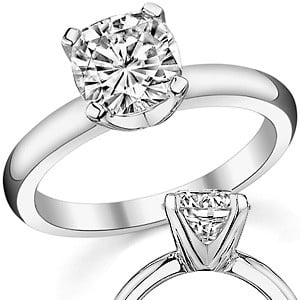
- Bezel Setting: In this setting, there is a thin frame of metal encasing the edge of the stone. It can either be a full bezel or semi bezel (the sides are left open).
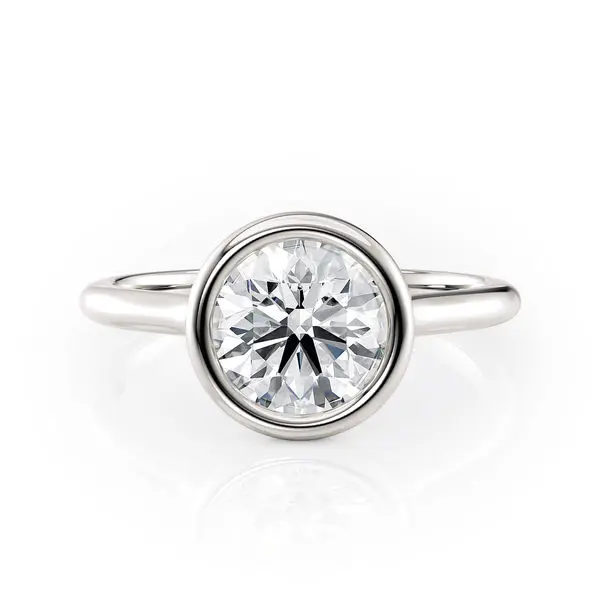
- Channel Setting: Has to do with setting small diamonds side-by-side within the metal. Channel setting is often seen in bands of rings as a means to promote the beauty of the center stone.
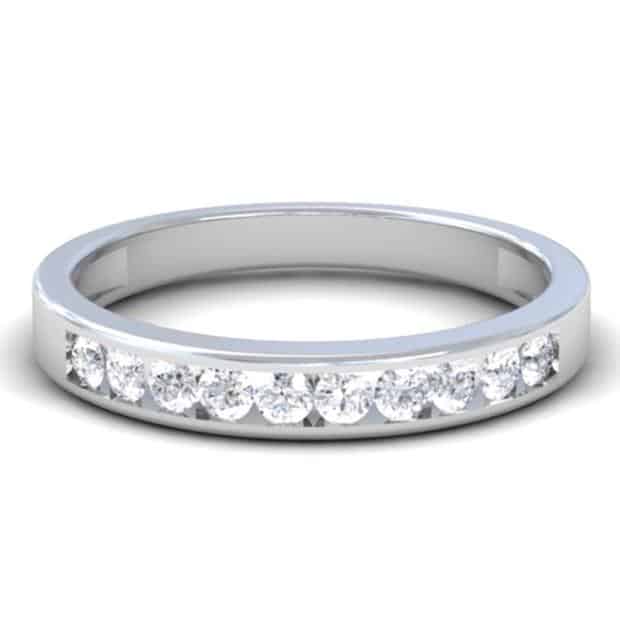
- Bar Setting: This is a variation of channel setting, whereby each gemstone is separated with a gold column that keeps them secure.
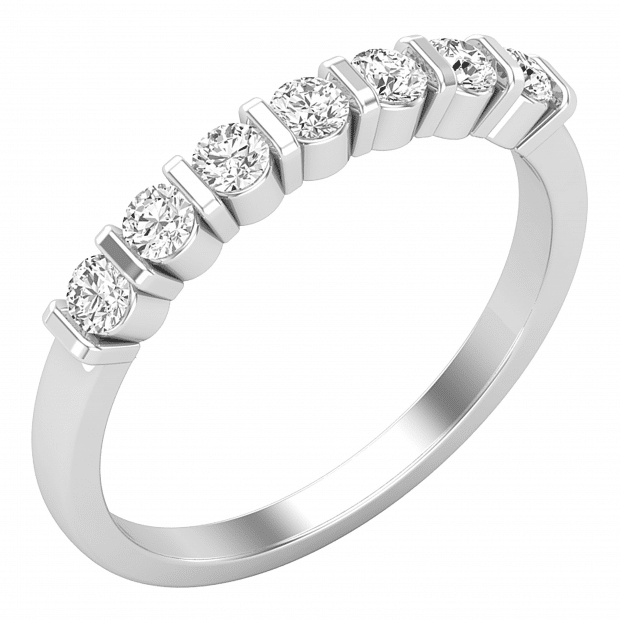
- Tension Setting: Involves holding the stone in place by the pressure of the metal squeezing into the sides of the gemstone. To the eye, it often looks like the stone is suspended in mid-air.
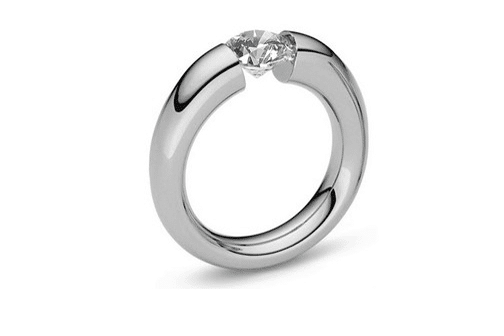
- Pressure Setting: Also known as “flush or rubbed-in setting,” is when stones are set into the metal to make the surface smooth and flush. This setting style is often used for smaller stones.
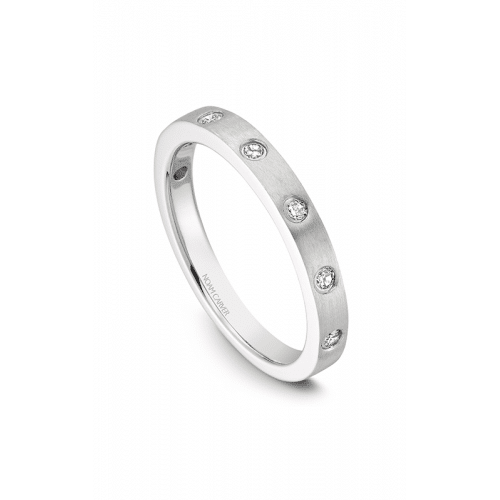
- Bead Setting: The stones are held securely in place by small beads of metal. This setting style is often used for wedding bands and engagement rings bands.
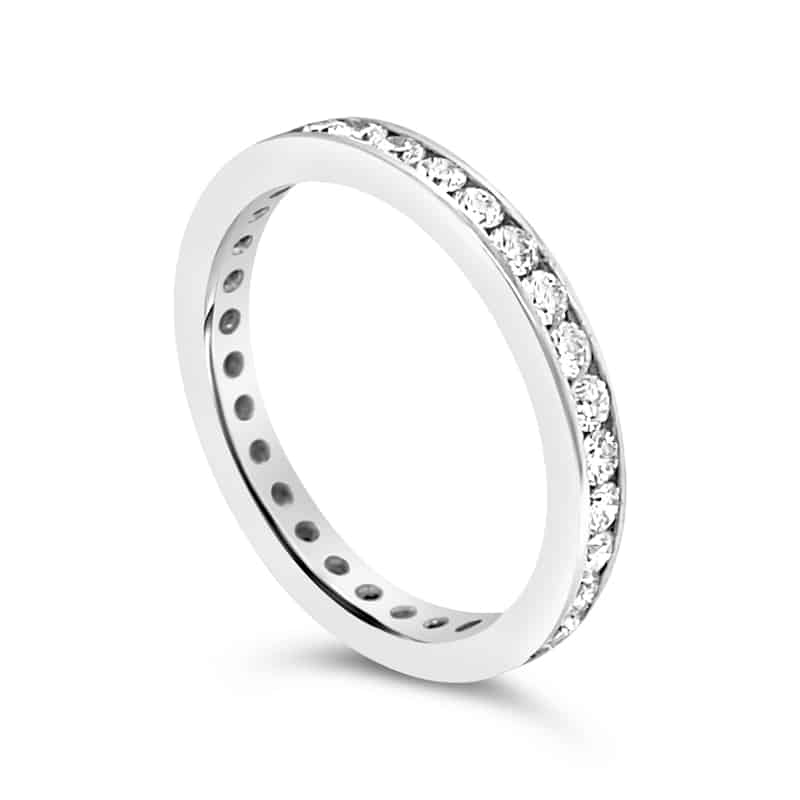
- Pave Setting: This setting has a diamond-encrusted look as if the jewelry is paved with diamonds. It involves setting small diamonds low and very closely, with only little metal visible in between each diamond.
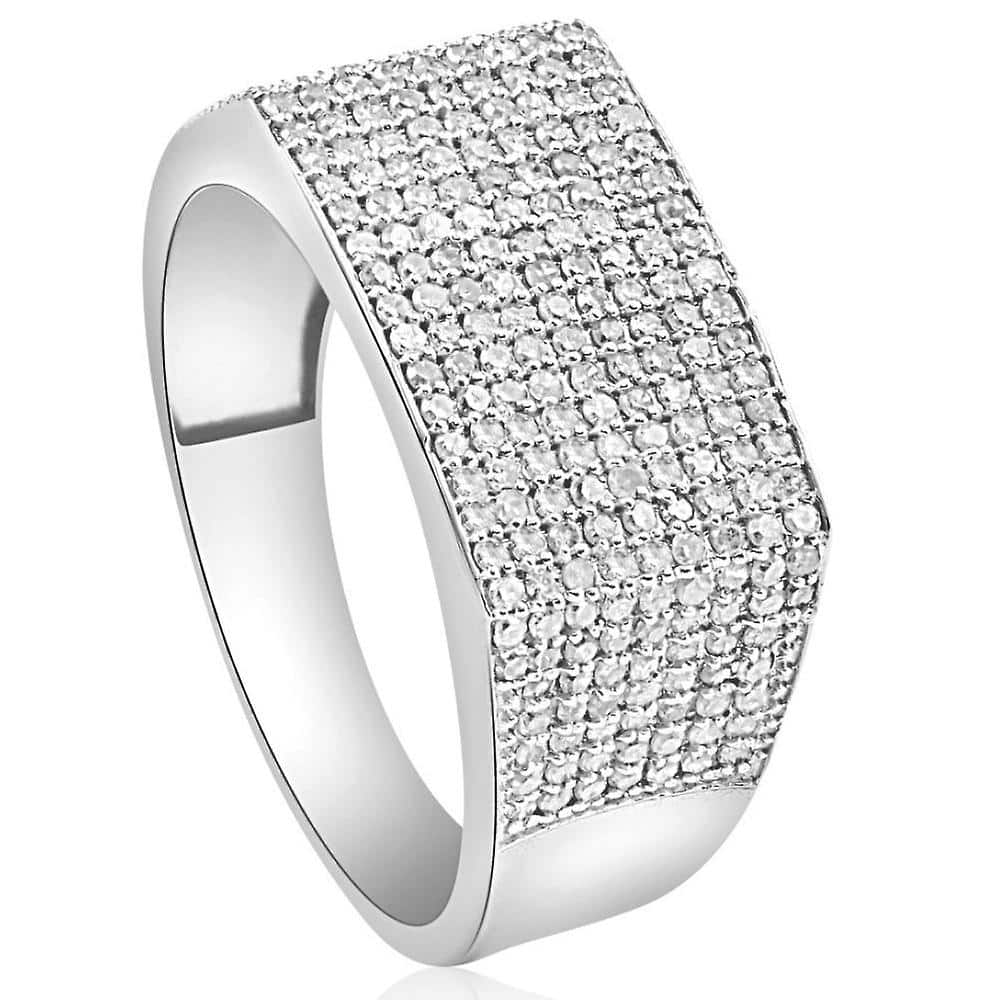
Gemstone Gluing
This is a jewelry making technique where gemstones are attached to a setting or base using specialized adhesives. These adhesives are usually selected based on the type of gemstone, the setting material, and the intended use of the jewelry. The adhesive is applied to the gemstone’s base or pavilion, as it is gently pressed into its designated position.
Zearrow works with a local college lab for a secret-formula adhesive, achieving the strongest attachment possible.
Gemstone gluing is a technical process that requires precision and care to ensure a secure and durable bond between the gemstone and jewelry.
The Drop Test
The drop test confirms the jewelry’s durability by subjecting it to a free fall from a 1 meter height. The aim of this experiment is to evaluate the firmness of the gemstones, ensuring that only those pieces where the stones don’t fall off are approved to be top-quality.
This test simulates potential impacts the jewelry might endure during regular wear, providing insights into the effectiveness of the setting and adhesive.
The Temperature Test
The temperature test exposes the jewelry to extreme temperatures, ranging from super high to super low. This test targets the adhesive used to glue the stones, assessing its resilience under temperature stress.
Subjecting these pieces of jewelry to harsh temperature variations will reveal any weakness in the adhesive that could lead to gemstones coming off because of thermal expansion or contraction.
The Vibration Test
The vibration test replicates conditions encountered during transportation that might cause gemstones to come loose. The jewelries are exposed to controlled vibrations, like the potential impact of movements during shipping.
This test evaluates the effectiveness of gemstones setting and adhesive, ensuring that the jewelries can withstand vibrations without compromising the secure placement of the stones.
The Needle Test
The needle test involves carefully applying a needle to every jewelry piece to confirm the firm placement of gemstones. This meticulous inspection ensures that the adhesive securely holds the stones in place.
By systematically testing each piece with a needle, jewelers can identify any weak point in the setting. This serves as an additional quality control measure to guarantee that gemstones are firmly and durably attached to jewelries.
Conclusion
To make timeless jewelry with enchanting aesthetics, achieving a sturdy structure stands as the cornerstone of excellence. Starting from quality materials, embracing balanced jewelry design, using strong chains, firm & solid clasps, and unfillable gemstones, jewelers can craft pieces that are not just beautiful but also durable.
Source from a Quality Jewelry Manufacturer
After all is said and done, the bottomline is that it’s very important to choose manufacturers committed to rigorous quality standards.
Zearrow is a leading manufacturer in the jewelry industry that stands out for its unwavering dedication to achieving sturdy jewelry structure. By partnering with Zearrow, you are not only investing in excellent craftsmanship but also in the assurance that your jewelry will withstand the test of time.
